We hope that all of you, our readers, will enjoy and appreciate this article we’ve written about these 5 South China Sea Species. It was certainly our great pleasure to compile the information for you. May it provide you with both education and increased awareness.
Certainly, however, these few species listed herein represent only a portion of the life found within this region. It’s our belief, though, that they serve as excellent representations of the wonders that abound here. Check out our other articles for similar marvels.
Candy Crab
Candy Crab Facts
- Leading off this article detailing these 5 South China Sea Species we present the marvel of evolution known simply as the Candy Crab.
- This dazzlingly colored Crustacean most frequently goes by the common name used herein for wholly understandable reasons. This marvel of Nature also goes by several other general names, however. None are as appealing to the senses, however.
- These alternate terms include such distinctive appellations as the commensal soft coral crab, the Oates’s soft coral crab, and the Dendronephthya crab. Most of them, though, suitably serve to describe the unique Arthropod in at least one way or another.
- Meanwhile, scientific professionals, such as researchers, typically refer to the creature by its scientific name. That’s the somewhat hard to pronounce term of Hoplophrys oatesi. This tiny wonder further represents the sole member of its entire genus.
- The highly respected American malacologist and educator John Henderson Jr, made the first formal acknowledgement of the animal as a separate and distinct species. The eminent researcher made this scientifically noteworthy recognition in the year 1893.
- The Candy Crab appears to be maintaining a population base that’s both sizeable and stable. This status also seems to hold true throughout the entirety of its natural range. The IUCN, therefore, currently has no listing for it the organization’s Red List.
- The delicate wonder of evolution nevertheless must be considered to be facing at least some threats to its existence, though. Habitat loss certainly poses a possible danger. It’s greatest threat, however, likely consists of the ongoing threat of climate change.
Candy Crab Physical Description
The stunning invertebrate known as the Candy Crab easily draws the eye of those fortunate enough to encounter it. The impressive creature’s best known for its appearance, though, not it’s size. That’s because it evolved as an extremely tiny species of crustacean.
Unlike many of its brethren, however, this remarkable animal displays no noticeable degree of the physiological characteristic of sexual dimorphism. Distinguishing the genders therefore often presents a challenge for any but the trained professional.
This tendency further extends to both appearance and size. Mature adults of both genders attain an overall body length measuring roughly 0.6 – 0.8 in (1.5 – 2 cm). Exceptional specimens do occur, of course, but even these rarely exceed this size by much.
The body of adult individuals, of both sexes, also manifests numerous sharply pointed spines extending outward. Out of its five pairs of legs, the first pair possesses small claws. While small, these two appendages nonetheless remain comparatively powerful.
Yet its the coloring of the gorgeous Candy Crab that generally garners the most appreciation. That’s due to the fact that this consists of numerous colors, typically bright. These vary between individuals, to fit its location, but include yellow, pink, orange, and white.
- Kingdom: Animalia
- Phylum: Arthropoda
- Class: Malacostraca
- Order: Decapoda
- Family: Epialtidae
- Genus: Hoplophrys
- Species: H. oatesi
Candy Crab Distribution, Habitat, and Ecology
Fortunately, both for the Decapod itself, and those who appreciate Nature, the Candy Crab inhabits a comparatively broad swathe of the globe. That’s due to the fact that the amazing animal evolved as endemic to the majority of the beautiful Indo-Pacific region.
This includes large portions of the coastlines of both North America and South America, for starters. Yet the intrepid species also appears along the shores of Europe and Africa, as well. But its greatest concentration lies along the shores of Australia and Asia.
Even there, though, it displays decided preferences in its choice of habitat that limit its potential range. That’s because it only inhabits the relatively shallow regions. This most frequently occurs along the coastlines, of course, but also extends to near islands.
More specifically, it only makes its home within a very small range of depths. This extends from a known maximum of 295 ft (90 m) to roughly 3.3 ft (1 m). It also typically resides either on or very near sections of coral. There, its coloring provides excellent camouflage.
The magnificent Candy Crab also developed a mutually beneficial relationship with its host coral. It keeps the coral clean of debris, and even defends it from predators. For disguise, the animal even cuts off polyps from the coral, and attaches them to its own shell!
The host coral, meanwhile, provides the diminutive crab with both shelter and food from its own leftovers. This wonder of evolution most frequently consumes quantitites of plankton, however. Its own predators consist of a wide range of species, including various fish.
Greater blue-ringed octopus
Greater blue-ringed octopus Facts
- Next up among our choices for inclusion in this compilation of these 5 South China Sea Species we give you the remarkable Greater blue-ringed octopus.
- This gorgeously-hued creation of Nature and evolution most frequently goes by this descriptive common name throughout its known range. For the moment, the cephalopod has no other generally accepted non-technical name by which it’s known.
- Professionals, such as researchers, meanwhile, most often refer to the animal by its formal scientific name. That term, though, represents a true tongue-twister. That’s because the amazing animal bears the official name of the Hapalochlaena lunulata.
- Regardless of the term one chooses to use to refer to it, however, it’s a fascinating species. That’s partly due to the fact that it also represents one of only four known species of blue-ringed octopuses. Among those, it further ranks as one of the smallest.
- The first official recognition of the animal as a separate and distinct species further took place in the year 1832. At that time, the French researchers Jean Rene Constant Quoy and Joseph Paul Gaimard made the original notation in the annals of science.
- For the moment, at least, the Greater blue-ringed octopus appears to be maintaining a population base that’s both stable and sufficient. This also seems to hold true throughout the entirety of its range. The IUCN, therefore, lists it as Least Concern.
- The cephalopod nevertheless faces some potential threats to its existence, like many species. Potential habitat degradation remains a possible threat. Its greatest danger, however, most likely comes from the peril posed by ongoing climate change.
Greater blue-ringed octopus Physical Description
The breathtaking Greater blue-ringed octopus easily draws the eye of all who encounter it. The intriguing animal does not do so, however, due to sheer size. That’s due to the fact that, all other impressive statistics aside, it actually remains extremely small in size.
Unlike many related creatures, it does not display any noticeable degree of the physiological characteristic of sexual dimorphism, however. Both genders therefore manifest the same small size. Individuals rarely exceed 3.9 in (10 cm) in length, arms included!
The common name, in fact, actually refers to the distinctive markings, blue rings, similar to members of all four related species. In its specific case, though, these develop as larger than any of the other members of the group. Its colorful rings average 0.3 in (0.8 cm).
These also display the namesake bright blue color. Each of the rings further appears spread equally across all parts of the body and tentacles. In most individuals, these dazzling blue formations number approximately 60. Each is also surrounded by a thin black rim.
Each individual Greater blue-ringed octopus, like its numerous brethren, changes colors frequently, with random patterns. Some colors predominate, however. In the case of this species, these several colors include dark yellow, light brown, and even off-white.
- Kingdom: Animalia
- Phylum: Mollusca
- Class: Cephalopoda
- Order: Octopoda
- Family: Octopodidae
- Genus: Hapalochlaena
- Species: H. lunalata
Greater blue-ringed octopus Distribution, Habitat, and Ecology
Fortunately, both for the Greater blue-ringed octopus itself, and those of us who appreciate Nature, it has a relatively wide range of distribution. That’s due to the fact that its habitat range appears to cover most of the western portion of the Indo-Pacific Ocean.
That includes the area from Sri Lanka to the Phillipines in one section. In another portion of the range, it appears from Australia to Papua New Guinea. Individuals also seem to live as far as the Solomon Island and Vanuatu. Populations of the animal also appear throughout.
In all areas where it appears, though, it displays decidedly strong preferences for its choice of habitat. The creature appears almost exclusively in regions of very shallow waters, up to the shoreline. It also clearly prefers a mixed base, including reefs, sand, and stones.
Again mimicking most of its relatives, it typically lives in a burrow. Most spend the majority of their time there, only coming out to feed or to mate. The remains of previous meals often line the outside of the burrow, making the animal’s dweling easily recognizeable.
In keeping with its nature, the stunning Greater blue-ringed octopus feeds entirely carnivorously. Given its size, though, it sticks to small prey. These most commonly consist of such creatures as shrimp and crabs. It does occasionally, however, feed on small fish.
Fortunately for humans, this animal evolved as a generally calm, docile one. It rarely attacks unless handled or directly threated, such as simply stepping on it near the shoreline. It’s bite’s actually one of the most poisonous of all marine creatures, often fatal.
Indo-Pacific humpback dolphin
Indo-Pacific humpback dolphin
- Appearing in the third position in this listing of 5 South China Sea Species, though only due to random selection, is the fabulous Indo-Pacific humpback dolphin.
- This magnificent denizen of the oceans of the world most frequently goes by the informative common name. It also has another, less often used general name, however. That’s the name of the Chinese white dolphin. By either, it’s an amazing animal.
- Professionals, though, such as researchers, generally refer to this masterpiece of Nature by its scientific name. That term, though, is the less than easy to pronounce name of the Sousa chinensis. Regardless of the term applied, however, it’s a remarkable creature.
- It further received that name due to the work of the respected naturalist, Pehr Osbeck. The explorer, an apostle of the legendary Carl Linnaeus himself, made the first official acknowledegement of the animal as a separate and distinct species, in the year 1765.
- Previously, researchers considered it to be a subspecies of the Indian Ocean humpback dolphin. Subsequent DNA analysis, however, disproved that belief. Yet another related but separate species has now been identified, the Australian humpback dolphin.
- Regrettably, for several reasons, the amazing Indo-Pacific humpback dolphin now finds itself facing several threats to its continued existence. The IUCN, therefore, currently lists it as Vulnerable on the organizations’ published Red List of Threatened Species.
- Habitat loss forms a real concern for this impressive animal, largely due to coastal development. Overfishing and increased marine traffic throughout its range also pose a danger to it. Its greatest threat, however, most likely consists of ongoing climate change.
Indo-Pacific humpback dolphin Physical Description
The dazzling Indo-Pacific humpback dolphin fully merits appreciation for several factors. Being a roughly average-sized member of its Family, however, sheer size isn’t among them. The remarkable creature nevertheless does deserve respect, as most of its relatives.
Also following the pattern of most of its kind where physical size is concerned, it displays a moderate degree of the physiological trait of sexual dimorphism. In its case, this characteristic manifests itself with the males attaining a slightly greater size than females.
Individually, though, this measurement varies quite significantly. That’s because mature adults range in total length from 5.9 – 9.8 ft (1.8 – 3 m). Adult weights, however, vary somewhat less. Such individuals typically range from 551 – 628 lb (250 – 285 kg).
This smaller weight-to-length ratio often results in some specimens having a more rounded form than others. Otherwise, though, the two genders appear virtually identical. The prominent hump for which it’s known, however, varies in size from region to region.
It’s the color patterns of the Indo-Pacific humpback dolphin, though, that garners the most attention. That’s due to the fact that this varies significantly between adults. These range from a dark grey to whitish or even pinkish! Many also display small dark flecks.
- Kingdom: Animalia
- Phylum: Chordata
- Class: Mammalia
- Order: Artiodactyla
- Family: Delphinidae
- Genus: Sousa
- Species: S. chinensis
Indo-Pacific humpback dolphin Distribution, Habitat, and Ecology
Intriguingly, the marvelous work of evolution known as the Indo-Pacific humpback dolphin inhabits a territorial range that’s both expansive and restrictive. It’s very name provides a clue to that zone. More precisely, overall, it lives in both the Indian and Pacific Oceans.
In the Indian Ocean, that range remains more general, with the animal living along virtually all coastlines. In its Pacific Range, though, it remains slightly more specific. There, it mainly appears along the coasts of New Guinea, continental Australia, and Southeast Asia.
Within that zone of habitation, though, it typically restricts itself to very specific areas. These consist of the relatively shallow regions. This usually consists of sections along the coasts. There, however, it often frequents bays, estuaries, coral reefs, and even river mouths.
Given its geographical range, the creature clearly prefers tropical to subtropical climates. As a general principle, the marine mammal makes its home in waters warmer than 59F (15C). The beautiful species also rarely ventures to depths greater than 82 ft (25 m).
Just as its many relatives, the Indo-Pacific humpback dolphin feeds carnivorously. It principally feds on large quantities of fish species associated with either reef or estuaries. It most commonly feeds in close proximity to the floor of the ocean, sometimes in groups.
Meanwhile, its only confirmed predators consist of various types of sharks. Given its habitat range, however, Orcas likely also prey on the amazing animal. Some individuals live a solitary life, while others live in small groups. These typically range from 10-25 in number.
Great White Shark
Great White Shark Facts
- The next creature making itself known in this compendium of 5 South China Sea Species is among the best known animals on earth, the Great White Shark.
- The term undeniably serves as one of the common names for a truly incredible variety of large mackerel shark. This marvel of Nature also goes by the other common names, though, such as the great white, the white shark, and white pointer.
- In the meantime, it also has the tongue-twisting scientific name of the Carcharodon carcharias. But, regardless of what name one uses to refer to it, this magnficent creature represents one of the oceans primary apex predators.
- This incredibly efficient hunter also has almost no known predators of its own. This holds true throughout the entirety of its natural range. The rare exception, though, would be rare attacks by orcas when other, easier prey cannot be found.
- The breathtaking Great White Shark also exemplifies a very fast and far-ranging hunter. This true marvel of Nature has the ability to reach speeds measuring as much as 35 mph (56 kph). It can also safely dive to depths of as much as 3,900 ft (1,200 m).
- For a variety of reasons, the IUCN lists this majestic creature as Vulnerable. This holds true largely due to such factors as habitat loss and reduction of its prey, due to human commercial fishing practices. However, it also faces danger from climate change.
Great White Shark Physical Description
The remarkably impressive Great White Shark earns this status for several reasons, one of them being its sheer physical size. That’s because it attains a maximum known length of 20 ft (6 m) and weighs as much as roughly 5,000 pounds (2,268 kg).
It displays a visually striking color pattern. This holds true due to the fact that, most commonly, it appears grayish in color on the top part of its body and white underneath. In addition, just like many species of sharks, the Great White Shark has multiple rows of teeth.
Like all sharks, it also possesses a special sensory organ which allows it to detect the electromagnetic fields generated by the movement of living animals. In this species, this sense seems to be rather especially acute, allowing it to detect a field of half a billionth volt.
- Kingdom: Animalia
- Phylum: Chordata
- Class: Chondrichthyes
- Order: Lamniformes
- Family: Lamnidae
- Genus: Carcharodon
- Species: C. carcharias
Great White Shark Distribution, Habitat, and Ecology
It bears mentioning that the remarkable Great White Shark has more advantages than just its physical attributes. That holds true because it possesses an almost global range of habitation. This gives it a decided advantage over many species.
As a result, this truly amazing fish inhabits virtually all temperate and tropical waters. This fact often amazes those who encounter it. But, the greatest known concentration of its numbers presently occurs in the waters off the coast of South Africa, in Africa.
The incredibly powerful predator most commonly appears in coastal and offshore areas. This practice, quite unfortunately, frequently leads to encounters with humans. There, though, it rarely, though not never, enters waters with depths of less than 1,000 ft (305 m).
This extremely dangerous creature much more commonly appears at great depths, however. These often reach as deep as 3,900 ft (1,200 m). Additionally, with an average lifespan of 25 – 30 years, it generally prefers to stalk a regular territory.
Given its power and speed, the supremely effective predator quite understandably feeds on a wide variety of prey. In point of fact, this monstrously powerful, and also highly aggressive, hunter will feed on virtually any creature it can find.
The Great White Shark nevertheless does tend to have certain preferences for its choice of prey, as nearly all creatures do. More specifically, these include tuna, dolphins, seals, sea turtles, sea otters, and even, when possible, marine birds.
Orca
Orca Facts
- Closing out this article we’ve created pertaining to these 5 South China Sea Species we present the astounding mammal named simply the Orca.
- The term typically used names an unforgettable species of toothed whale that many refer to the species as killer whales. This breathtakingly beautiful, but deadly, marvel of Nature also forms the largest extant species of the oceanic dolphin family.
- The powerful creature thus remains regarded as an apex predator in every ocean, much like the Great White Shark. Due to various reasons related to its movements, the IUCN currently lists its conservation status as Data Insufficient.
- That highly uncertain status appears on the organization’s Red List of Threatened Species. This also occurs because many scientists believe that the behavior of various local populations may indicate the existence of two or more subspecies of Orca.
- Nonetheless, many individuals currently believe this magnificent creature to be facing various threats to its continued existence. Lamentably, one of these perils continues to be that of becoming an accidental bycatch in commercial fishing.
- Another threat, however, continues to be the danger of encounters with boats. That holds true of both fishing and recreational forms. Its greatest threat, however, most likely comes from the tragic ongoing effects of climate change.
Orca Physical Description
Perhaps most notably, the adult Orca possesses a very distinctive color pattern. and is therefore rarely confused with any other creature, even at a distance. Typically, the animal presents black on the back with sides and chest a bright white in color.
This magnificent animal also displays a white patch present behind and above the eye. Its body shape is heavy and robust. A small degree of sexual dimorphism exists as well. The male Orca averages between 20-26 ft (6-8 m) in length, and about 12,000 lb (5,443 kg) in weight.
Females, however, develop somewhat smaller than that in overall size. In point of fact, these reach maturity with an average length of 16-23 ft (5-7 m), and an average weight of 8,000 lb (3,629 kg). The dorsal fin of the male is also twice the size of that of the female.
- Kingdom: Animalia
- Phylum: Chordata
- Class: Mammalia
- Order: Artiodactyla
- Family: Delphinidae
- Genus: Orcinus
- Species: O. orca
Orca Distribution, Habitat, and Ecology
Further augmenting its status, the breathtaking Orca has an extraordinarily broad range of habitation. That’s due to the fact that it inhabits every ocean on earth, from tropical seas to the Arctic and Antarctic areas, and has no known natural predators.
Due to its great range and global distribution, an exact estimate of its numbers is impossible. However, the general estimate is that there are at least 50,000 surviving Orca individuals at this time. But that number could change with new informtion.
Though the species remains present globally, the greatest concentrations exist in higher latitudes and coastal regions. The largest population concentration also lives in the region of the Antarctic. This fact often surprises those new to knowledge of it.
Sometimes referred to as the wolves of the sea, the Orca typically hunts in packs. Its favorite prey varies rather greatly, with specialization occurring between local populations. Overall, its food primarily consists of fish, birds, and various marine mammals.
That includes species such as baleen whales, other toothed whales, seals, sea lions, walruses, and at times sea otters. In addition, in the wild, the majority of Orca specimens observed appear to live as long as 90 years. In captivity, sadly, individuals die much younger.
5 South China Sea Species
We sincerely hope that you completely enjoyed reading, and hopefully learning from, this article we’ve written about these 5 South China Sea Species. It’s also our sincere hope that doing so has left you with either a new or renewed appreciation for such wonders of Nature.
Unfortunately, however, many of their kindred around the world now find themselves facing strong threats to their continued existence as a species. Many of those dangers, in fact, stem from the actions of mankind. We must do all we can to protect and preserve them all.
Check out our other articles on 5 Rare Mind-Blowing Cloud Types, Spectacular Dolphins Throughout Our World, 7 Incredible Invertebrates of Italy, Earth’s Countless Amazing Amphibians
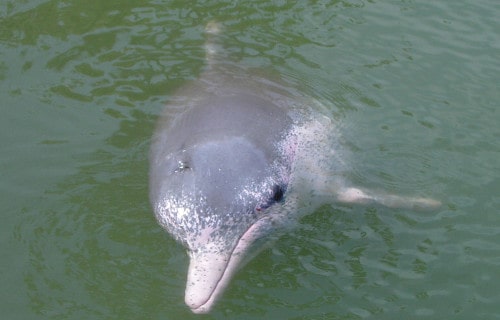
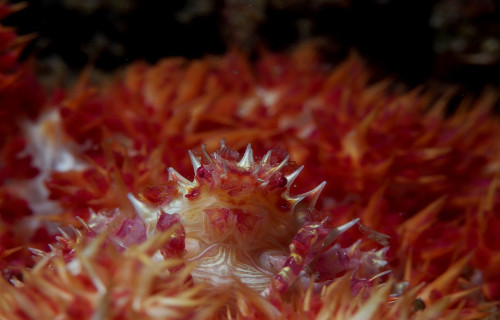
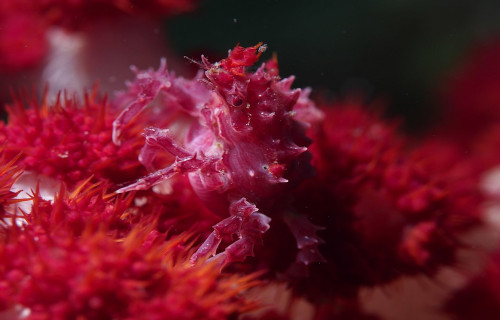
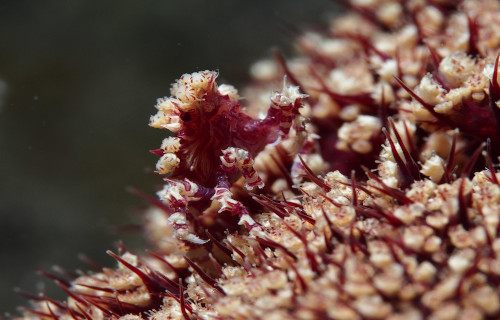
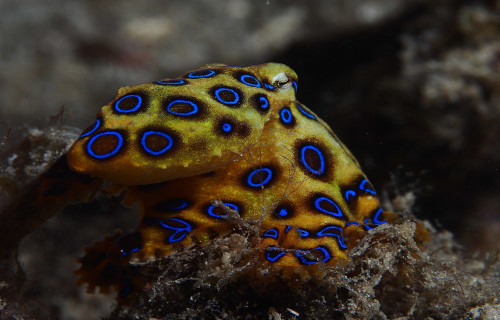

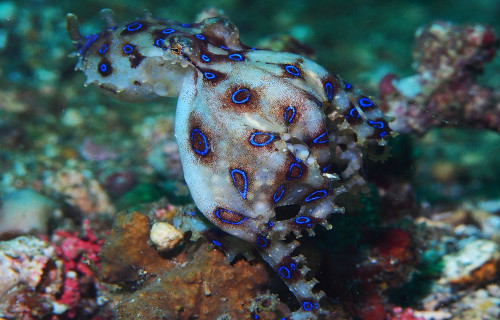
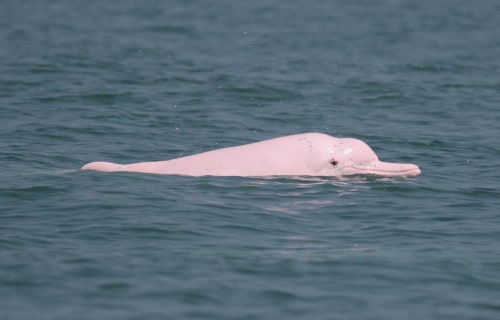
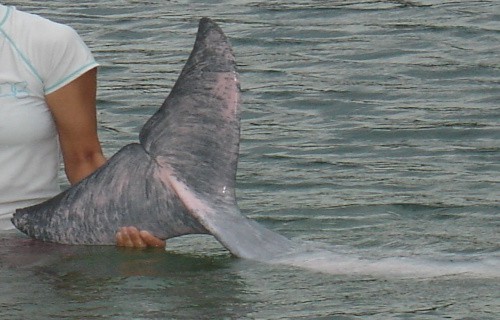

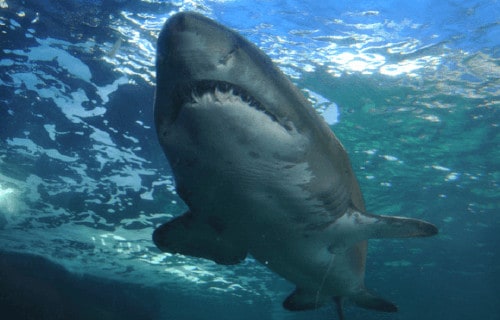
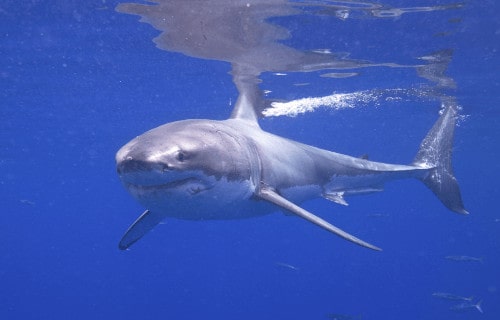
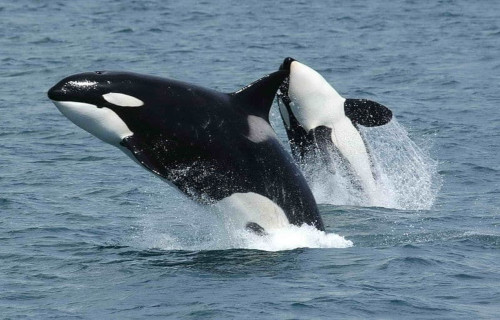
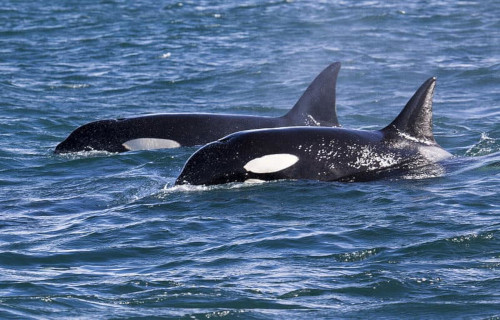
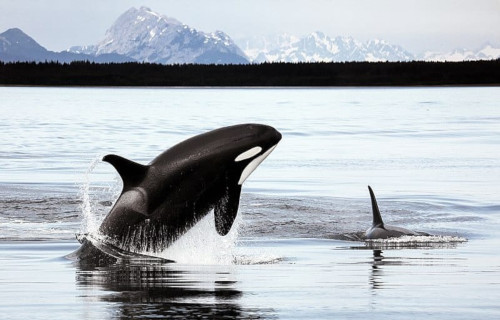









Leave a Reply